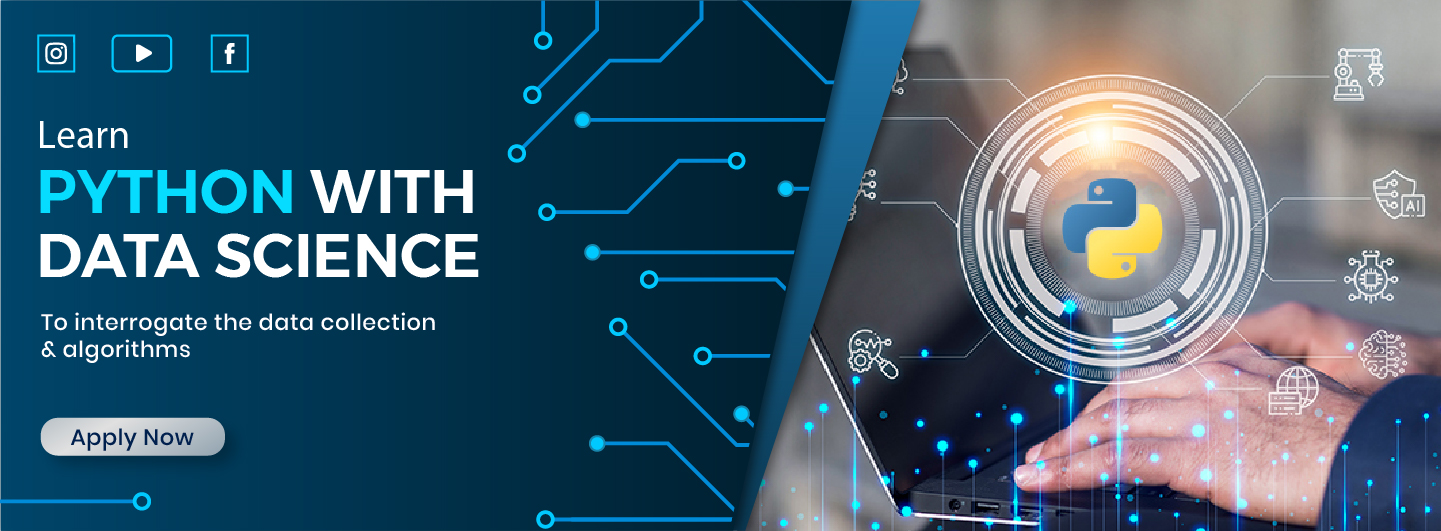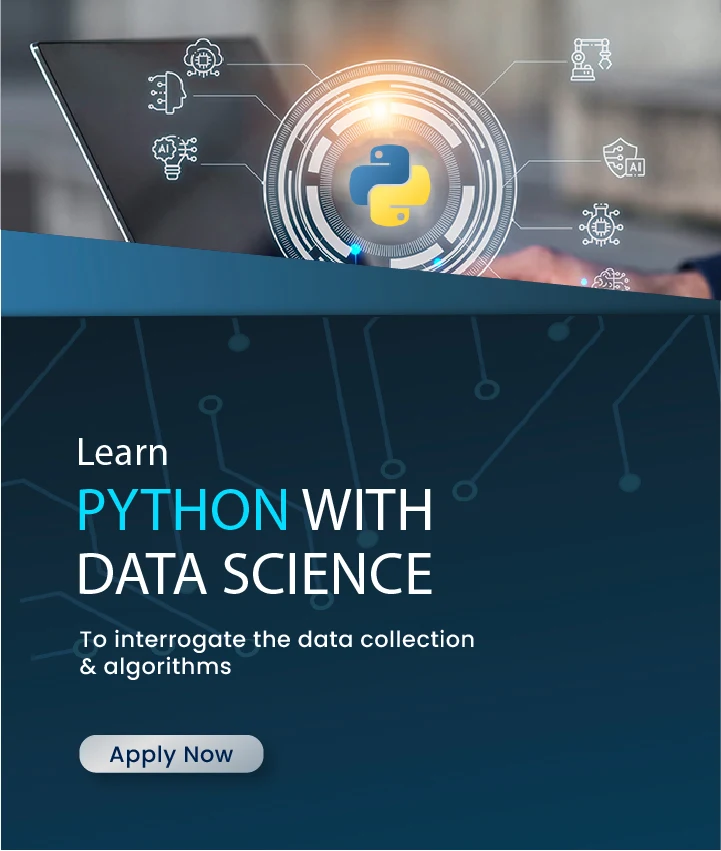


The python with data science course covers the basics to advanced python concepts along with in-depth knowledge of data science which includes data analytics, machine learning, data visualization, time series data linear algorithms and different tools available for data science. Data Science with Python has become a required skill for almost every industry. The demand for data science is ever on the rise.
Course Highlights
1. |
Data Extraction |
2. |
Time Series Data |
3. |
CSV Module |
4. |
Python Hashing |
5. |
10+ Assignment |
6. |
5+ Live Projects |
7. |
43 Modules |
8. |
1 Year Free Backup Classes |
Learning Outcome
| • | You will be able to create data structures and do further analysis of the data frame. |
| • | You can easily automate your data related to multi-dimensional arrays. |
| • | You will be able to visualize the data to identify time series components. |
| • | You will be able to store a large number of variables or data using CSV files. |
| • | You will be able to use clustering to identify clusters of data objects in a dataset. |
| • | You will be able to utilize the backend for URL routing, HTTP responses, accessing databases, and web security.. |
Software and Apps that you will learn in this course




Course Content
Jobs You will Get After Completing Course
Python with data science is an increasingly required skill for many data science positions in each and every industry. The jobs for data science with python have appeared to increase roughly about 55% and have been continuously growing for years. Organizations of all sizes and Industries have increased their demand for the professionals who have advanced skills in python, machine learning and data science and are ready to offer high salaries in return for these skills.
| Job profile After completing this course |
Average salary ( 1+ year experience) |
|---|---|
| Data Scientist | 60k- 80k |
| Data Engineer | 50k- 60k |
| Data Analyst | 35k- 45k |
| Machine Learning Engineer | 45k- 60k |
| Financial Analyst | 30k- 45k |
| Product Analyst | 37k- 45k |
| Data Journalist | 35k- 50k |

Backup Class

Flexible Timing

Fees Installment

Expert Trainer

100% job assistance

Free Library
.webp)
Live Project
.webp)
Practical learning

Best computer training institute in kalka ji IFDA have very qualified teaching to nurture to students . Clear evey dout until to get teacher.over all IFDA in complete for accounting course

I have a great experience in IFDA. The trainers are very supportive and explain every topic in detail. This Institute also provide backup classes on Saturday. I would like to suggest to join IFDA Institute to my friends and relatives. Thank u

I consider it very helpful because when when I first got into IFDA institute, it was very friendly and my knowledge in technology has gotten just not better but best. All the faculty here are very polite and ready to help whenever asked. Getting in this institute was my best decision.

0k +

0k +

0+
.webp)
0+
Frequently Asked Questions
We provide internship and 100% job assistance to those students who are hard-working and well-mannered till the course is completed. We conduct interviews with our recruiters for you to get hired that help you to gain professionalism in this field.
Students can pursue this course if they have completed class 10th from a recognised board and are eager to learn programming and coding skills.
With the fast development of modern technology, data science is currently in extremely high demand, the use of Python for data science applications has been gaining steam in recent years. It is useful in web apps and cloud computing platforms and by learning this course you will be able to access different python libraries and frameworks.
Yes we provide 50% scholarship for those students who cannot afford but want to learn about data science and python for building their career.
Yes, IFDA Institute focuses on providing both theoretical as well as practical training to enhance your skills which helps in your career growth.
Yes, we provide weekly classes or you can schedule your class according to your suitable time. We also provide online and backup classes so you can attend your missed or pending lectures.
 (1).png)
 (1).png)
 (1).png)
 (1).png)
 (1).png)
 (1).png)
Get free counselling by our experience counsellors. We offer you free demo & trial classes to evaluate your eligibilty for the course.
Have you
Any question
Or need some help?
Please fill out the form below with your enquiry, and we will respond you as soon as possible.